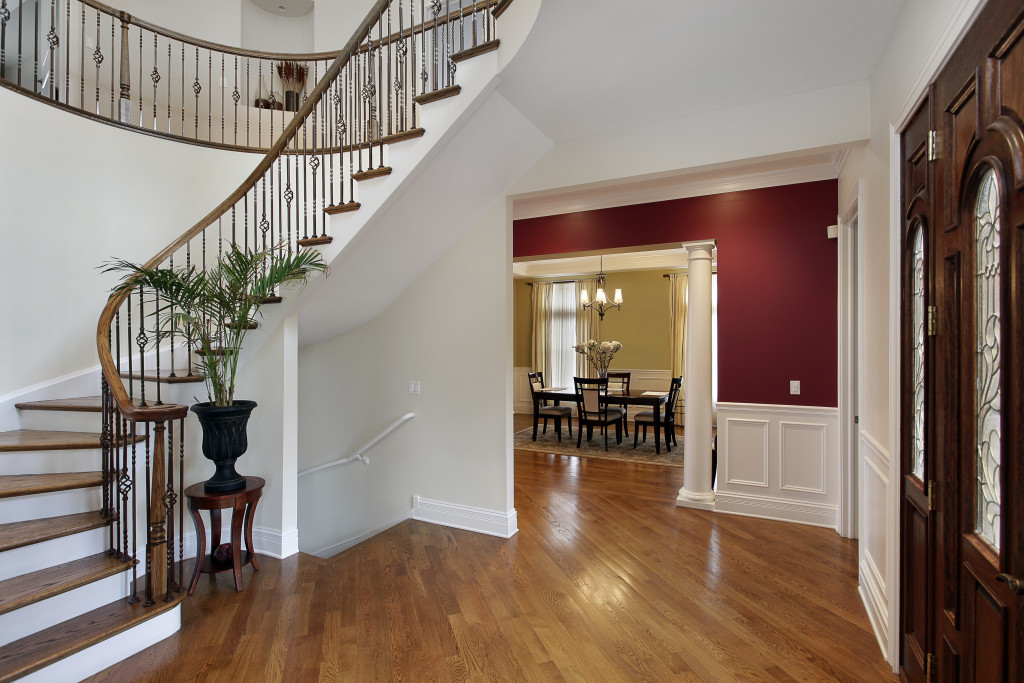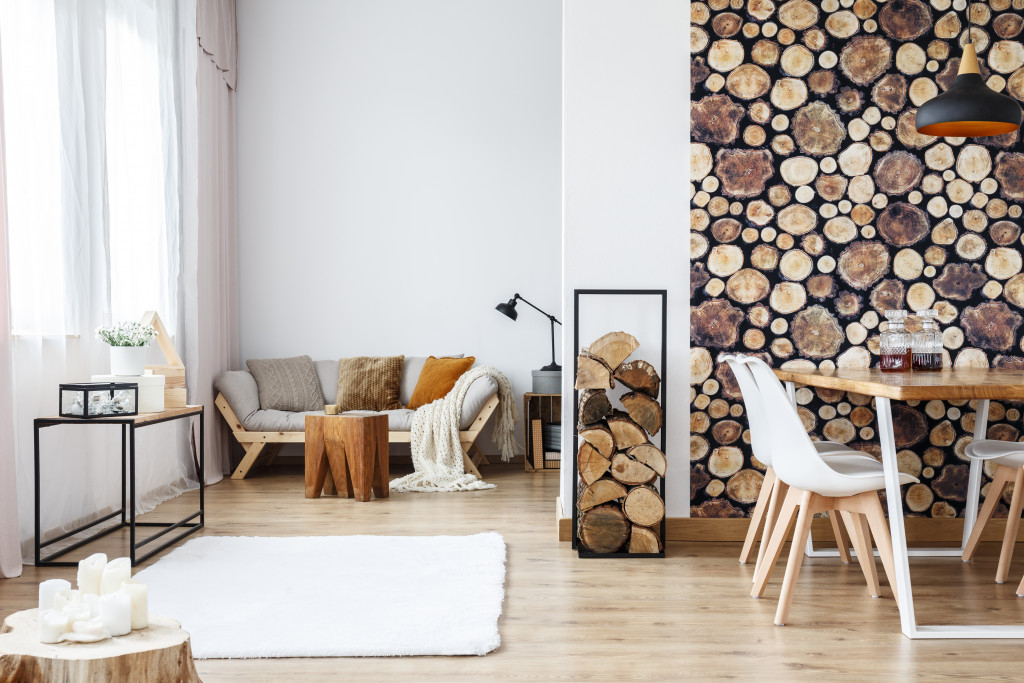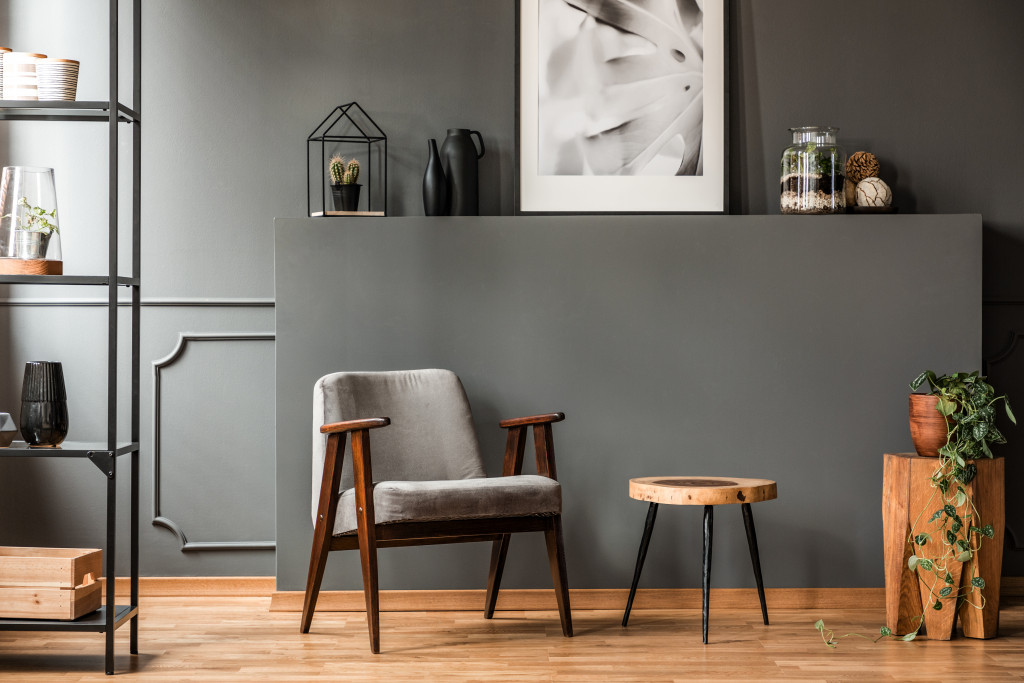- Choose a consistent color palette to set the tone for your home design.
- Pay attention to lighting, from ambient and task lighting to accent and pathway lighting.
- Incorporate functional furniture and consider the layout of each room’s natural flow of movement.
- Add texture and layers with various materials, textiles, plants, artwork, and decorative objects.
- Enhance exterior walls with pre-cast concrete wall panels for a timeless and stylish look.
Your home is a reflection of your personal style and taste. Improving your home design enhances your space’s aesthetics and creates a harmonious and inviting atmosphere. Whether you’re looking to revamp a specific room or give your entire home a makeover, several key tips and tricks can help you achieve a more cohesive and visually pleasing design. This guide will explore five effective tips to improve your home design and create a space you’ll love coming home to.
1. Choose a Consistent Color Palette
One of the fundamental aspects of a well-designed home is a consistent color palette. Selecting a cohesive color scheme sets the tone for your entire space and creates a sense of harmony. Start by choosing a primary color that will serve as the foundation for your design. Consider the mood and ambiance you want to create in each room. Soft, neutral tones create a calming, serene atmosphere, while bold and vibrant hues add energy and personality.
Once you’ve chosen a primary color, select a complementary palette of shades and tones that work well together. This includes colors for your walls, furniture, textiles, and accessories. Aim for a balance of warm and cool tones to create visual interest. Remember, consistency doesn’t mean everything has to match perfectly, but the colors should complement and flow seamlessly throughout your home.
2. Pay Attention to Lighting

Lighting is crucial in enhancing your home’s overall design and ambiance. It can create a welcoming and comfortable environment while highlighting architectural features and focal points. Pay attention to both natural and artificial lighting sources in your home.
Here are different kinds of lighting to incorporate:
Ambient Lighting
Ambient lighting is a room’s general or background lighting that creates an overall atmosphere and sense of brightness. Common ambient light sources are ceiling-mounted fixtures, such as chandeliers, pendants, flush-mount lights, and recessed cans. Wall sconces and track lighting can also provide ambient lighting. For living areas, use warm white bulbs to create a cozy mood.
Task Lighting
Task lighting is bright enough to support specific kitchen activities such as reading or cooking. Table lamps, desk lamps, swing-arm wall sconces, and under cabinet lights are typical task lighting sources for home offices or bedrooms. Consider adjustable fixtures that allow you to direct light exactly where needed.
Accent Lighting
Accent lighting highlights your home’s artwork, architectural features, or other focal points. This can be done with track lights, recessed cans, wall sconces, and floor lamps. Adjustable fixtures are great for accent lighting as they allow you to position the light exactly where you want it.
Pathway Lighting
Pathway lighting guides visitors through space without creating too much glare or shadows. Use small lanterns or low-level ground lights along pathways and entryways to improve visibility while adding extra safety and security outdoors at night. Consider solar-powered solutions that don’t require wiring. Pathway lighting can also create an inviting atmosphere and add interest to your outdoor space.
3. Embrace Functional Furniture and Layout
The layout and arrangement of furniture can greatly impact the functionality and flow of your space. Invest in furniture that looks aesthetically pleasing and serves a practical purpose. Consider the size of your rooms and choose furniture that fits proportionally. Opt for multi-functional pieces, such as storage ottomans or modular sofas, to maximize space and provide additional storage options.
When arranging furniture, think about the natural flow of movement within each room. Create conversation areas by grouping furniture together and leaving enough space for easy navigation. Ensure that there is a logical and comfortable pathway between different areas. Experiment with different furniture arrangements until you find the layout that best suits your needs and maximizes the functionality of your space.
4. Add Texture and Layers

Texture and layers add depth and visual interest to your home design. Incorporate different textures and materials to create a tactile experience and make your space more inviting. Mix and match wood, metal, fabric, and natural fibers to add richness and variety.
Introduce texture through textiles such as rugs, curtains, and throw pillows. Opt for different patterns and fabrics to create contrast and intrigue. Consider adding texture to your walls with wallpaper or textured paint. Incorporate elements like plants, artwork, and decorative objects to add layers and create focal points. Combining various textures and layers will add depth and dimension to your home design.
5. Enhance Your Exterior Walls
Your home design doesn’t stop at the interior walls. Enhancing your exterior walls can also significantly impact your overall look and feel. Investing in pre-cast concrete walls is an ideal way to make a lasting impression while providing privacy, security, and style for your home. Precast wall panels come in various designs and textures to fit any individual taste, allowing you to create stunning and timeless walls that will stand the test of time.
Concrete walls will also ensure that your walls are strong and durable, while their weather-resistant properties will protect against the elements. With precast concrete walls, you can create an outdoor living area that is both functional and aesthetic.
In Summary
Improving your overall home design is an exciting journey that allows you to create a space that reflects your personal style and enhances your everyday life. You can transform your home into a visually appealing and harmonious haven by choosing a consistent color palette, paying attention to lighting, embracing functional furniture and layout, adding texture and layers, and enhancing your walls with wall panels. Remember to trust your instincts, be open to experimentation, and enjoy the process of creating a home that truly feels like your own.




